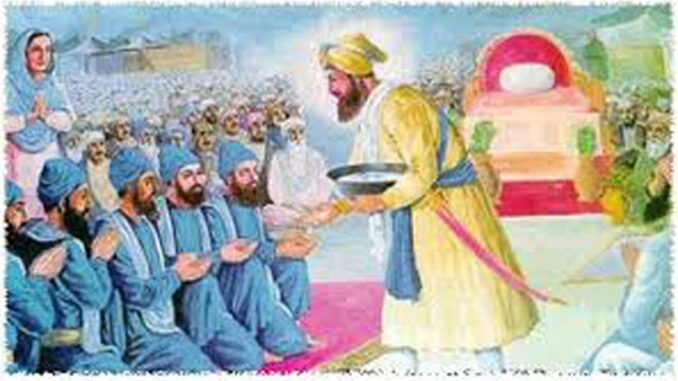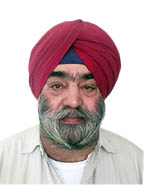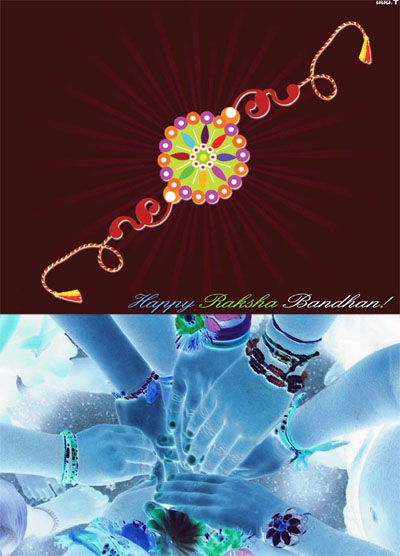

Will Vaisakhi, one of the biggest Indian festivals after Diwali, bring luck to 50-odd candidates of “East Indian” origin in the ensuing federal elections in Canada? It is the timing of the polls that assumes significance as the East Indian community in general and the Punjabi community in particular, gets fully involved in celebrations that mark the birth of “Khalsa”, “Khalsa Sirjana Divas” in Punjabi parlance.
Celebrated with fervor and gaiety, Vaisakhi is fast becoming a global event. It has given the overseas Punjabis and the Sikhs a distinct socio-economic-cultural identity.
Besides its religious significance – birth anniversary of the Khalsa, the pure – it has traditionally been correlated to the start of harvesting season (of wheat crop) in north India reflecting in the process great socio-economic strides the farming community of North has made. Besides, for many Indian communities, it marks the start of a New Year.
After the Covid pandemic subsided, major public events, including commemorating Vaisakhi through City Parades or Nagar Kirtan processions, resumed in 2023 after a few years’ hiatus.. They could not be organized in 2021 and 2022. Instead, special gatherings were held at Sikh temples – gurdwaras – by following the safety protocols of wearing face masks and maintaining a physical distance.
In 2022, the “Nagar kirtan procession” was replaced by a special congregation held in Toronto on April 24. Similarly, other major cities in North America also held special “Vaisakhi” celebrations by following the official guidelines.
It was on this day in 1699 that the 10th Sikh Guru, Sri Guru Gobind Singh, chose the historic town of Sri Anandpur Sahib in Punjab for the launch of the Khalsa. Though main religious celebrations are held at Takht Sri Kesgarh Sahib (Sri Anandpur Sahib), Golden Temple (Amritsar) and Takht Sri Damdama Sahib (Talwandi Sabo), the Sikhs all over the world mark the festivities not only by holding special congregations in gurdwaras but also in a global show of their progress in social, political, art, culture, sports, and economic fields as followers of one of the most recent and modern religions.
Since Sikhism had its origin in Pakistan – Nankana Sahib, the birthplace of the first Sikh Guru, Sri Guru Nanak Dev – groups of the devout also visit Sikh shrines there as a part of Vaisakhi celebrations that are held in the second week of April every year. After almost 230 years of the birth of Guru Nanak Dev, Sri Guru Gobind Singh had given the Sikhs new identity of the Khalsa by introducing the concept of Saint Soldier.
Vaisakhi celebrations’ global significance can be measured from ever-expanding numbers of cosmopolitan and metropolitan cities the world over that reverberate to the beats of bhangra and display of traditional martial art of gatka as part of “Nagar Kirtan processions” or Sikh Parades. Sikhs pride in claiming to be one of the most affluent minorities in the world.
While Sikhs in India have Nagar Kirtan processions and special congregations on the Vaisakhi day, overseas Punjabis make it special with lavish celebrations. There, Nagar Kirtan processions or Sikh parades alone do not mark the celebrations. They come as a socio-cultural package comprising competitions in games, sports and cultural events, besides holding special religious congregations that continue for weeks together.
Holding of community kitchens, illumination of the entire route of the procession and distribution of literature about Sikhism, besides updated copies of telephone and business directories, have come to stay as an integral part of celebrations. One of the latest additions to the event witnessed in some major North American cities has been the use of smaller aircraft for showering floral petals over the processions.

This year, the “Vaisakhi” celebrations will have added significance as Canada is all set to hold its Parliament elections, ending in the last week of April. The electioneering has been picking up pace and is expected to peak a week before the polling day. And a day before the poll day, there will be a massive Sikh Day Parade or Nagar Kirtan procession in the Greater Toronto Area.
Incidentally, more than 60 percent of all candidates of the “East India” origin participating in the 2025 federal elections are Sikhs.
Since the Sikhs are a growing political minority, leaders of various political parties, both at provincial and federal levels, make it a point to get their presence noticed during the celebratory processions or special congregations in major centers like Toronto, Vancouver, Surrey, Calgary, Edmonton, Brampton and several other Canadian cities.
Though celebrations are held worldwide, major focus remains on Sikhs in Europe (UK, Germany, Italy, France, Greece, the Netherlands and Sweden), the Americas (USA, Canada), Australia and New Zealand, Africa (Kenya) and Asia (Malaysia, Thailand and Fiji).
Besides the major Commonwealth nations like England, Canada, Australia and New Zealand, several other countries have accorded recognition to some of the major Sikh festivals in general and Vaisakhi in particular. In 2015, for example, the Malaysian government allowed Sikhs an off day on Vaisakhi day.
In 1999, when the entire world celebrated the tercentenary of the Khalsa, Canada became the first country other than India to take out a commemorative stamp to mark the occasion.
Vaisakhi celebrations are now held inside Parliament complexes, including Parliament Hill in Ottawa, besides several Provincial Parliaments in other Commonwealth nations. In the United States, Sikh Parades are held in almost every major city, including New York, San Francisco, Los Angeles, and Yuba City.
In England, besides London, they are organized in several cities, the biggest being in Birmingham.
Historically, the Sikhs had to struggle hard not only to shrug off the blot of “second-rate citizens” in many parts of the erstwhile Commonwealth but also had to fight democratically for their rights and absorption in the mainstream of their new countries of abode.
In fact, the concept of the Nagar Kirtan processions, or the Sikh Parades, has proved to be an effective tool for the overseas Sikh community to introduce itself as a peaceful and hard-working group that has no qualms about making their present countries of abode their homes.
It has been this commitment that has helped them to script an unprecedented success story the world over. Though the Punjabis – described as Hindus – started reaching Canada in early 1900, they were denied voting rights in British Columbia from 1907 onwards. They had to wait for 40 long years to win back the right to vote. In 1947, the requirement to be a voter was changed to Canadian citizenship in addition to being a British subject. It was in 1950 that the first Sikh – “Giani” Niranjan Singh Grewall – was elected to the City Council of Mission in British Columbia.
The first ever-Sikh Parade or Nagar Kirtan procession was organized on January 19, 1908, along Second Avenue in Vancouver. On August 28, 1912, Hardial Singh Atwal earned the distinction of becoming the first Canadian-born Sikh.
Each Nagar Kirtan Procession comprises, among other things, a tastefully decorated truck trailer that carries sacred Guru Granth Sahib in a golden or silver palanquin, followed by five baptized Sikhs (Panj Pyaras) who carry Kesari flags (Nishan Sahibs), Gurbani reciting groups or “Parbhat Pheris” besides Bhangra and gatka players.
The scale at which the Nagar Kirtan processions are now organized in North America started in 1978 when the Canadian Sikhs organized a massive Nagar Kirtan procession to mark the 500th birth anniversary of Guru Amar Das. Since then, the holding of the Sikh Parade has become an annual feature.
Many historians and social scientists subscribe to the view that the Nagar Kirtan or Sikh Parade paved the way for the consolidation of the overseas Sikh community as a strong political group that ultimately saw a turbaned Sikh – Gurbax Singh Malhi – in the Canadian House of Commons. It was he, who six years later, persuaded the then Liberals to hold inside the Parliament Hill a big celebration to mark the tercentenary celebrations of Khalsa on Vaisakhi Day. In May 1999, Canada issued a 49-cent special commemorative stamp to mark the tercentenary of the Khalsa.
Not only major TV channels but also the mainstream Media run special features and articles on Sikhs and their immense contribution to the economic growth of the new countries of their abode. Success stories of young Sikh boys and girls, too, are played up as a buildup for the Vaisakhi supplements.
Since then, Vaisakhi celebrations inside Parliaments and State Assemblies have become a regular feature both in the Commonwealth and some European and African nations.
The celebrations not only ensure the holding of competitions, tournaments, folk events and religious congregations but also the organization of lavish feasts where the local populace is invited as a part of the “know your neighborhood communities better” programme launched by some of the enterprising Overseas Sikh Organizations. This was necessitated more as a mode of defense and awareness to thwart growing incidents of hate violence witnessed in several parts of North America after the 9/11 terrorist attack.
Traditionally, religious celebrations comprise of taking out a nagar kirtan procession – that is normally done a day or two before the actual Vaisakhi day – besides holding a special religious congregation at gurdwaras, where at community kitchens – langars – jalebis are a special attraction.
Normally, one or more jathas (groups) of Sikhs go to Pakistan to join the Vaisakhi celebrations at Gurdwara Sri Janam Asthan, Nankana Sahib, the birthplace of Sikhism, besides other historic shrines there. The political uncertainty notwithstanding, jathas of Sikh pilgrims went there this year also, though the size was much smaller.
(Prabhjot Singh is a Toronto-based senior journalist. He can be reached at Prabhjot416@gmail.com)





Be the first to comment